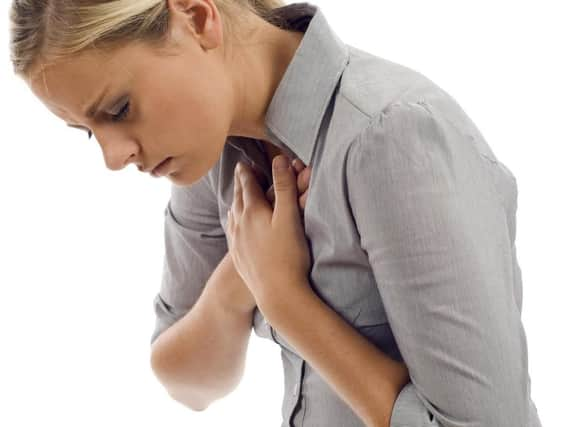How to spot the signs of a heart attack


Nausea, indigestion, heartburn or abdominal pain, or shortness of breath, cold sweat, fatigue, lightheadedness or sudden dizziness.
Not everyone suffering a heart attack has the same symptoms or the same severity of symptoms. Some people have mild pain, others have more severe pain. Some people have no symptoms at all.
Advertisement
Hide AdAdvertisement
Hide AdFor others, the first sign may be sudden cardiac arrest. However, the more signs and symptoms you have, the greater the likelihood you’re having a heart attack.
Some heart attacks strike suddenly, but many people have warning signs and symptoms hours, days or weeks in advance. The earliest warning might be recurrent chest pain or pressure (angina) that’s triggered by exertion and relieved by rest. Angina is caused by a temporary decrease in blood flow to the heart.
Complications are often related to the damage done to your heart during an attack, which can lead to abnormal heart rhythms (arrhythmias). Electrical “short circuits” can develop, resulting in abnormal heart rhythms.
An attack might damage so much heart tissue that the remaining heart muscle can’t pump enough blood out resulting in heart failure. This can be temporary, or it can be a chronic condition resulting from extensive and permanent damage to your heart.
Advertisement
Hide AdAdvertisement
Hide AdSudden cardiac arrest can occur when, without warning, your heart stops due to an electrical disturbance that causes an arrhythmia. Heart attacks increase the risk of sudden cardiac arrest, which can be fatal without immediate treatment.